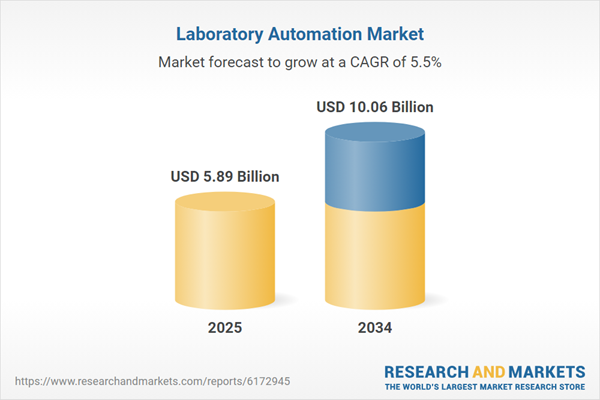The global laboratory automation market is driven by an increase in favourable government initiatives across the world. Laboratory automation is a strategy to optimize, develop, research, and capitalize on technologies that help in upgrading the existing process. Laboratory automation generally comprises of multiple automated devices and programmed algorithms that increase efficiency as well as make work easier for scientific research in the laboratories. This helps in the performance of highly repetitive tasks by saving human time, cuts cost of operations, increases profitability, and uplifts the scope of work procedure. Automation has become an indispensable part of the modern industry. All industries are moving towards it to maintain their standard of work.
North America is predicted to have the highest share in the laboratory automation market. They have escalated the spending on healthcare and increased research and development activities involving trials that are necessary to be performed without a window of error and precision. Along with North America, Asia-Pacific is estimated to grow at the highest CAGR due to improving infrastructure and healthcare, and advancements in the R&D division.
Market Segmentation
Laboratory automation is referred to as a multi-disciplinary strategy that uses devices and software to enhance the efficiency of scientific research in laboratories with the help of automated systems. Lab automation has numerous properties. It increases productivity, decreases errors, saves ample time, makes multiple testing possible in less time, decreases wastage, and optimizes the structure of work. A useful feature of automation is that it requires minimal monitoring and goes on with external observation for multiple hours.The laboratory automation market is bifurcated on the basis of type:
- Modular Automation
- Whole Lab Automation
On the basis of equipment and software type, the market is divided into:
- Automated Clinical Laboratory Systems
- Workstations
- LIMS (Laboratory Information Management Systems)
- Sample Transport Systems
- Specimen Handling Systems
- Storage Retrieval Systems
- Automated Drug Discovery Laboratory Systems
- Plate Readers
- Automated Liquid Handling Systems
- LIMS (Laboratory Information Management Systems)
- Robotic Systems
- Storage Retrieval Systems
- Dissolution Testing Systems
On the basis of end-user, the laboratory automation market is segmented into:
- Biotechnology and Pharmaceutical Companies
- Hospitals and Diagnostic Laboratories
- Research and Academic Institutes
On the basis of region, the laboratory automation market is segmented into:
- North America
- Europe
- Asia-Pacific
- Latin America
- Middle East and Africa
Market Analysis
The global laboratory automation market is driven by the increasing number of retiring professionals, along with the declining number of accredited training programs. On account of this, a rising trend toward automation has been observed to maintain the influx of samples with lowered chances of errors. In addition to this, the use of automated systems in laboratories has also improved the productivity of the drug discovery process. High demand for accuracy in performing tasks will be an essential factor in driving the laboratory automation market. Additionally, governments of numerous countries are investing in research and development (R&D). For example, governments have undertaken initiatives to accelerate test speeds and decrease cost inputs across automated laboratories. This has led to an increase in the market growth of laboratory automation. The increasing demand for new drugs and clinical diagnostics will propel the market to grow a lot in the forecast period. However, the high capital needed for setup is expected to inhibit the growth of laboratory automation.Competitive Landscape
The report gives a detailed analysis of the following key players in the global laboratory automation market, covering their competitive landscape, capacity, and latest developments like mergers, acquisitions, and investments, expansions of capacity, and plant turnarounds:- Danaher Corp.
- Abbott
- PerkinElmer Inc.
- Tecan Trading AG
- Siemens Healthcare GmbH
- ThermoFisher Scientific Inc.
- Agilent Technologies, Inc.
- Others
Table of Contents
Companies Mentioned
The key companies featured in this Laboratory Automation market report include:- Danaher Corp.
- Abbott
- PerkinElmer Inc.
- Tecan Trading AG
- Siemens Healthcare GmbH
- ThermoFisher Scientific Inc.
- Agilent Technologies, Inc.
Table Information
| Report Attribute | Details |
|---|---|
| No. of Pages | 172 |
| Published | August 2025 |
| Forecast Period | 2025 - 2034 |
| Estimated Market Value ( USD | $ 5.89 Billion |
| Forecasted Market Value ( USD | $ 10.06 Billion |
| Compound Annual Growth Rate | 5.5% |
| Regions Covered | Global |
| No. of Companies Mentioned | 8 |









